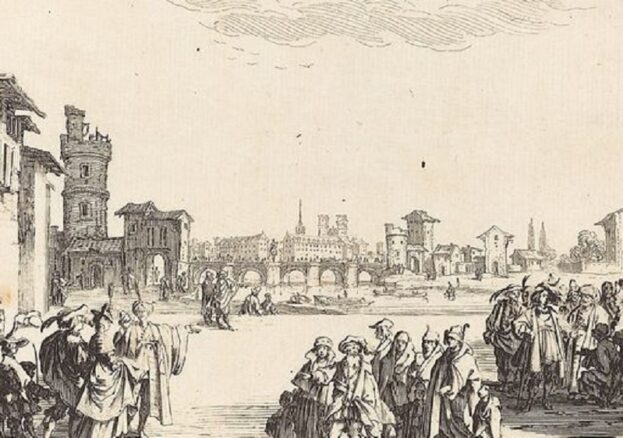
Islington in the 1830s was transforming from rural outskirts into a genteel suburb. Like today, bricks and mortar were a status symbol. Unlike today, some homes were bought with income from other property – enslaved people.
World transatlantic slavery lasted for 350 years. Twelve million kidnapped Africans were packed and chained in ships’ cargo holds for the gruelling oceanic voyage, the survivors’ descendants born into bondage.
By 1760, Britain was the world number one transatlantic slave trader, supplying 40,000 enslaved Africans every year to its Caribbean and South American colonies.
Owning a slave within the British Isles was banned in the 1770s and the British transatlantic trade was outlawed by the Slave Trade Act of 1807.
But slavery persisted on the Empire’s plantations, growing the sugar for our tea and cake, until the Slavery Abolition Act of 1833.
There remained the matter of compensation – for owners, not slaves – which was agreed in the Slave Compensation Act of 1837.
The government raised £20 million (up to £100 billion at today’s values) to buy the slaves from their owners. The sum amounted to 40 per cent of the Treasury’s annual receipts and nearly bankrupted Britain.
Taxpayers did not clear the debt incurred until 2015.
The bureaucracy needed to pay compensation for 800,000 slaves left a trove of records, which were rediscovered by the Legacies of British Slave ownership (LBS) project at University College London. The accounts have been transferred onto a database, together with details of owners and their estates.
From the LBS database we can identify the last slave owners of Islington, who hung on to their slaves until the bitter end of British slavery to win compensation under the 1837 Act.
There were 35 Islington slave owners who were paid compensation, receiving a total of £283,220 (£19.2 million in today’s money) for freeing the 11,153 enslaved people under their control.
The owners lived or worked within the boundaries of the borough as we know it today.
Others not included here had connections to Islington through family, or being baptised, married, or buried at local churches, especially St Mary’s.
The scale of ownership ranged from a single slave to thousands. Barrow Burnet, a tailor of Barnsbury Villas, bought Thomas Baillie, a 50-year-old African “at the Workhouse Gate”.
He received £29 compensation for one freed slave at Trelawny, Jamaica.
Nathaniel Snell Chancy was the greatest beneficiary. A West India merchant in Wilson Street near Finsbury Square, he received £80,566 for releasing his 2,969 slaves in Antigua, Grenada, St Vincent, Tobago and British Guyana. In 1856, he took his own life.
The owners were located throughout Islington, from grand squares to smart terraces with names now absorbed into our main roads.
James Hackman Pearson, a West India merchant’s clerk of Milner Square, was awarded £4,273 for 225 slaves in Jamaica.
Robert Metcalfe Atkinson, a floor cloth manufacturer, was paid £688 to free his 31 slaves in Dominica. He later moved into a brand new property in Compton Street, now Bingham Street.
William Jegon, a merchant, died in Florence Street. He had received £17,227 in return for the freedom of 892 Jamaicans.
Merchant George Leake received £275 for 37 Jamaicans. He later moved into a new home on Highbury New Park.
Robert McCulloch of Colebrooke Row was paid £599 for 60 slaves.
Five owners were women. Maria Lang, widow of Finsbury Square merchant Robert Lang, received the second biggest local payout – £59,514 for 1,176 slaves in British Guyana and Grenada.
The database shows some slave owners were of mixed race. Among them was George Athill, recorded as a “free man of colour”, the great-grandfather of writer Diane Athill.
Two of his children were baptised in Islington. He was awarded £47 for three enslaved Antiguans.
John Richard Farr, who later lived on Pentonville Road and co-founded the Royal London Ophthalmic Hospital, also received £514 for his 33 slaves in Barbados.
The Finsbury Square neighbourhood was a quarter for West India merchants, many of them slave owners.
The LBS database shows 11 slave owning merchants and families there, nine of whom were awarded claims totalling £195,962 for 6,469 slaves. That is over two thirds of the value of all awards in Islington.
Among them was Alexander Stewart, who won 14 claims totalling £27,067 for the liberty of 1,323 slaves in Jamaica and the Cape of Good Hope.
Another was John Nelson Bond of Finsbury Place (now Finsbury Pavement), who was paid £8,272 for the release of 410 enslaved Jamaicans.
Nearby Finsbury Circus, within the City boundary, accommodated another six slave-owning merchants.
Some compensation trickled down – not to former slaves but to the British Royal Family. Thomas Cussans III was awarded £3,831 for 199 enslaved people in Jamaica.
His fortune was passed down via his daughter-in-law, Matilda of Barford Street, after she was deserted by his illegitimate son, an artist.
Matilda’s daughter Annie was the ancestor of the first Earl of Snowdon, and his son Viscount Linley, nephew of the Queen.
This is not about memories of a bygone age.
The legacy of slavery has tripped down the generations as inequality and racism.
There remain calls for reparations – from the descendants of slaves this time, not owners.
And Caribbean governments, through their Caricom group, have demanded national reparations to compensate for the distorting effects of plantation slavery on their modern economies.
Ann Pool Ritherdon was given 12 slaves in 1803, including Bonilla and her children Mary, Mira and Kalin. Ann, later of Brunswick Terrace, was paid £274 for 12 Jamaican slaves 34 years later.
Many of this little band of enslaved would have died in the years before emancipation, and others born. But perhaps Bonilla’s children survived to taste freedom.
The LBS project is now researching enslaved ancestors so descendants can discover their heritage. Their database is free online at https://www.ucl.ac.uk/lbs/
